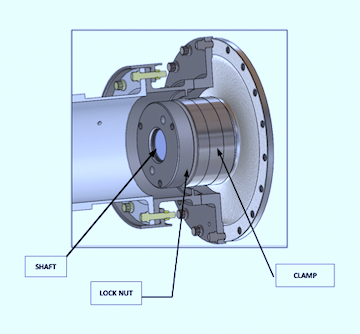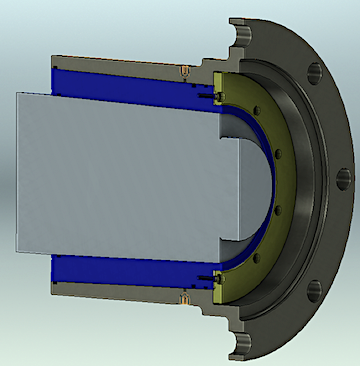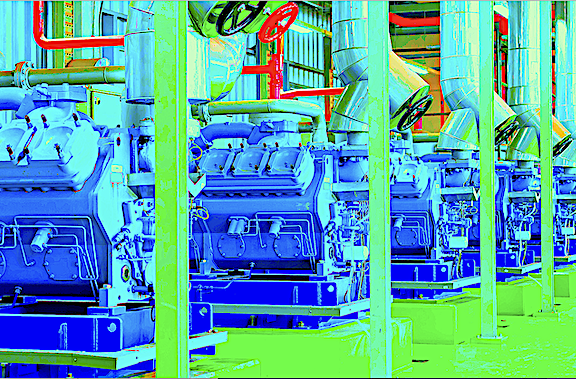This article is a follow-up to my recent review of compressor-valve and steam-gland technologies (August 20, 2020). As discussed in that piece, those particular products may not have been brand new, but I considered them worthy of a closer look. To repeat, reliability and profitability usually suffer when best-available technology isn’t used in plant operations. Motivated engineers should be aware of this and, thus, constantly seek out information on machinery- and component-upgrade options. That’s why I am highlighting the following two items. As with my August 20 technology reviews, however, I offer these strictly from a personal-observation standpoint, not as endorsements.
NOVEL LOW-MOMENT, COUPLING-HUB CLAMPING METHOD
Earlier this year, Riverhawk Company, (New Hartford, NY, riverhawk.com), a noted manufacturer of couplings and specialty engineered equipment, released information on a recently developed clamping method for its low-moment coupling hub. According to the company, this clamping method has been shown to boost maximum torque capacity and eliminate high-pressure sliding on the shaft-to-hub contact surfaces. In fact, in no way does it injure the surfaces of the shaft. As of this writing, Riverhawk’s patent for this novel clamping method (shown in Fig. 1 below) is pending.

Fig. 1. Novel Low-Moment Coupling-Hub Clamping Method
(Source: Riverhawk Company, New Harford, NY)
TORSIONAL PEAK-SHAVER COUPLING HUB
On a related note, Riverhawk Company is offering a coupling-hub design that incorporates a means of peak-torque shaving. That’s important, given the fact machinery designers and operators are occasionally faced with the need to run through short duration high-torque transients.
Machinery known to experience those types of transient torques must be designed to protect their shaft systems against dangerous torque spikes. Because these spikes are often of a very high magnitude, they can result in damage to the equipment. An example of such damage is slippage of a coupling hub on a shaft end.
Torque spikes can originate from within the process or from the power source. Examples of potentially damaging sources of torque spikes are:
- Missed synchronization timing of generators upon connection with the power grid
- Switch “bouncing” in the case of induction motor drives
- Ingestion of fluid slugs during compressor operation
- Short circuit in the local power network
- Mechanical failure of another member of a machine train.
Torque spikes can ramp up instantaneously and are often followed by near-instantaneous cessation or decay of the transient. All but the last two cases listed above (4 and 5) might benefit from allowing the equipment to keep running.
Usually, the first objective with respect to torque spikes is survival of the machinery. A relatively frequent and competing objective is continuation of the process or “running through the undesirable deviation.” Although these two are conflicting objectives, both must often be weighed and considered.
Thoughtfully engineered Peak Shaver Safety Hub (PSSH) designs can satisfy both objectives by absorbing an energy spike while allowing the process to continue.
Riverhawk’s PSSH design incorporates internal slip surfaces dimensioned and manufactured to tolerate short duration slippage without damage. A PSSH can be integral to a flexible coupling; it can either be mounted on a shaft (in a configuration that replaces the hub) or as a spacer located between driving and driven shafts.

Fig. 2. Torsional Peak-Shaver Safety Hub (PSSH)
(Source: Riverhawk Company, New Hartford, NY)
Figure 2 (above) is a cross-sectional view of Riverhawk’s Peak Shaver Safety Hub (PSSH). The sleeves are clamped together by a hydraulic torque coupler. Hydraulic torque application allows frictional contact between the two surfaces, which then operate as a solid assembly. Whenever a torque spike occurs, the sleeve design allows a predefined amount of slippage to prevent overloading the driven machine. The definable slippage between the sleeves allows driving and driven machines to stay on-line (i.e., continue to “run through“) until the transient situation has cleared. The PSSH then regains grip without slipping and continues to transmit normal torque to the driven (loaded) machine.
For more information on these technologies, visit riverhawk.com.
Editor’s Note: Click Here To Download An Updated (May 2020) List Of Heinz Bloch’s 22 Books
ABOUT THE AUTHOR
Heinz Bloch’s long professional career included assignments as Exxon Chemical’s Regional Machinery Specialist for the United States. A recognized subject-matter-expert on plant equipment and failure avoidance, he is the author of numerous books and articles, and continues to present at technical conferences around the world. Bloch holds B.S. and M.S. degrees in Mechanical Engineering and is an ASME Life Fellow. These days, he’s based near Houston, TX. Email him at heinzpbloch@gmail.com.
Tags: reliability, availability, maintenance, RAM, couplings, coupling hubs



